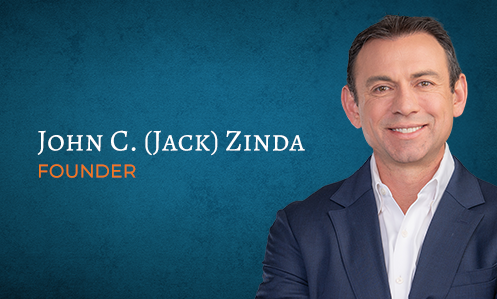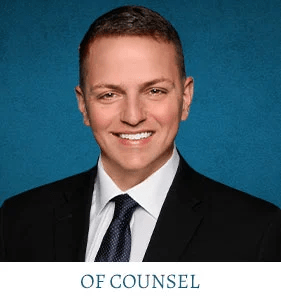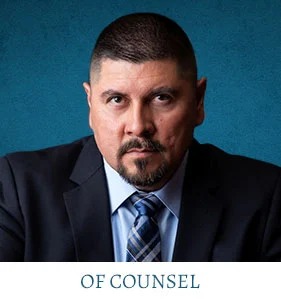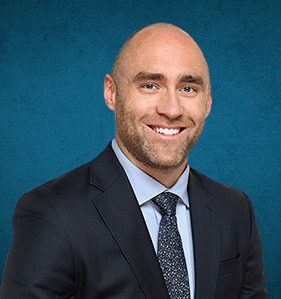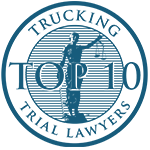CALL (800) 863-5312 TO SPEAK WITH CONSTRUCTION ACCIDENT LAWYERS FOR FREE
Construction sites are unpredictable environments and some of the most dangerous places to work in the United States. Each year, thousands of injuries occur in construction zones, and hurt workers are often left facing financial hardship due to medical bills and missing work in addition to their pain and suffering.
At Zinda Law Group, we believe that no victim of a construction accident should have to face their case alone. Our construction accident attorneys have the knowledge and resources necessary to help you seek maximum compensation. As one of our clients, you will pay nothing unless we win your construction injury case.
If you or a loved one has been injured on a construction site, call Zinda Law Group at (800) 863-5312 for a 100% free consultation with an experienced construction accident lawyer.
COMMON CONSTRUCTION ACCIDENTS
The kinds of accidents that may occur in the hectic environments of construction sites are innumerable. Our construction accident attorneys are equipped to evaluate each case and help you develop a strategy to secure compensation. Some common accident types we have handled include:
- Ladder accidents. Ladders are ubiquitous tools in construction, and though the risks associated with climbing high on a ladder are obvious, many workers nevertheless do so; the injuries sustainable from a fall from a ladder can be severe.
- Scaffolding accidents. Scaffolding presents similar dangers to ladders, though with certain added complexities. For example, the elaborate structure of scaffolding may require added safety measures, such as guardrails, harnesses, adequate footing, and appropriate assembly.
- Nail gun accidents. The dangers of operating a nail gun are also obvious, and the injuries sustainable from a nail gun accident can be gruesome. Liable parties may include the manufacturer, an employer, or the nail gun operator.
- Electrocutions. Of course, running large machinery on a construction site comes with risk of electrocutions. Machinery, power tools, and overhead powerlines are all potential sources of electrocution liability. Potential injuries from electrocution include severe burns, organ damage, cardiac arrest, loss of limbs, paralysis, and death.
Who is at fault for construction accident injuries?
Depending on the facts of the case, liability in a construction accident may fall on a number of sources. A lawyer who is experienced with handling construction accident cases can help you evaluate the potential sources of recovery. Important questions in determining liability include:
- Where did the accident occur?
- What were the conditions of the accident site?
- What equipment was involved?
- Was the equipment used properly?
- Who had control over the site and equipment at the time of the accident?
- Whom do you work for?
Depending on the answers to these questions, liability may belong to the owner of the construction site, contractors and subcontractors responsible for individual segments of a project, architects and engineers responsible for the design safety standards of structures, or even from equipment manufacturers.
- Arizona Construction Accident Lawyers
- Colorado Construction Accident Lawyers
- New Mexico Construction Accident Lawyers
- Texas Construction Accident Lawyers
CASE RESULTS
Routes to recovery
Worker’s compensation is often the first route to recovery in a construction accident case. However, if the construction accident that injured you or a loved one was the fault of someone else, you can file a lawsuit against the responsible party and/or negotiate a private settlement. The best strategy in cases where they refuse to settle is to file a lawsuit in order to force the responsible party to negotiate a settlement.
Workers’ Compensation
Most victims of construction accidents are employees or subcontractors of the company doing the work. In many of these cases, the issues can be resolved through workers’ compensation. Workers’ compensation, however, does not cover every type of claim, especially when the negligent party was a third-party or subcontractor who failed to follow safety regulations or there was a defective part or piece of equipment that led to the accident.
There are preventable accidents where a person was injured on the job through the carelessness of an employer or a co-worker. Under these circumstances, you may file a claim for damages under a workers’ compensation plan. The experienced construction accident lawyers at Zinda Law Group can guide you through the process and help get the compensation you deserve for your construction site injuries.
Read More: Construction Workers’ Rights
Negligence
Negligence is the most common cause of action in personal injury cases. In addition to worker’s compensation, you may also be able to seek recovery by bringing a negligence action—especially in cases where your employer was not the responsible party.
The legal doctrine of negligence is predicated on the idea that we each owe each other a general duty to exercise “reasonable care” to ensure that we do not cause each other harm. For example, we each have a duty to exercise caution when operating a vehicle or forklift. Similarly, the parties involved in bringing a project to completion must comply with minimum safety standards in order to minimize risk of injury.
Showing negligence requires proving:
1. the existence of a legal duty owed by the defendant to the plaintiff,
2. that the defendant breached that duty,
3. that the plaintiff suffered an injury, and
4. that the plaintiff’s injury was caused by the defendant’s breach.
Proving negligence often requires a close look at the facts. A common way to establish negligence when there has been a construction accident is to show that they violated Occupational Safety and Health Administration (OSHA) regulations governing the safe operation of the premises.
Products Liability
A products liability case may be based on a negligence theory. Alternatively, it may be based on a strict liability theory or a warranty of fitness for purpose theory.
Strict Liability
Unlike negligence, which requires that the defendant have behaved irresponsibly, strict liability may exist whether the defendant behaved responsibly or not. Regardless of the defendant’s intent, they may be held strictly liable if a plaintiff proves that the defendant’s product is defective.
Warranty of Fitness
Products generally come with a warranty of fitness for purpose, which means that when a product is sold, the customer may presume that the product can be used safely for the product’s advertised purpose. For example, if you purchase a drill, the drill may be presumed to be safe for drilling. A violation of the implied warranty may result in liability.
Products liability can stem from:
- Design defects, which are inherent to the product;
- Manufacturing defects, which occur during assembly and may be limited to only a few finished products; and
- Defects in marketing, which may be based on improper instructions or a failure to warn of inherent dangers in the products.
Read More: Products Liability
Kinds of Damages
There are generally two kinds of recoverable damages in personal injury cases: economic and non-economic. Economic damages are those that can be reduced to a tangible monetary value; examples include medical bills, time off work due to injury, and injury-related out-of-pocket expenses. Non-economic damages refer to those that cannot be reduced to a monetary value; among other things, this includes your physical pain, mental anguish, the loss of enjoyment of daily activities due to your injury, and loss of a loved one (legally referred to as “loss of consortium”).
There exists a third category of damages known as “punitive damages.” These are awarded not as compensation to the plaintiff but as a means of punishing the defendant. Courts are generally reluctant to award punitive damages, but such an award is more likely in cases of extreme recklessness or intentional wrongdoing.
When calculating how much to ask for in damages, you need to think long-term. You are also entitled to damages for your pain, suffering, and other intangible losses. These may be far greater than your award for medical expenses and lost work time.
WHAT TO DO AFTER A CONSTRUCTION ACCIDENT
Accidents—both on and off the job—can be traumatic and disorienting. Take the following steps if you are involved in one.
Stop Working.
If you suffer an injury on the job, stop working. Even if the injury may seem minor and you feel like you can finish your work, continuing with your task may worsen the injury and may even compromise our case. For example, a claims adjuster may doubt the severity of your injury by pointing out that you kept working despite your injury.
Get Medical Attention.
Your wellbeing is the top priority, so seek medical attention as soon as possible when injured on the job. Whether your injury is minor or severe, you should go visit a doctor right away as you may not know the extent of your injuries until after a thorough examination. The medical documentation will also become key evidence in your case.
Report Your Injury to Your Employer.
Report the accident and associated injuries to your employer to keep a record; even minor injuries should be recorded. This record will serve as additional evidence.
Collect Evidence and Gather Witness Information.
Even if your employer subscribes to workers’ compensation, be sure to always document and collect evidence from the scene of the accident. Whatever evidence you collect can be used in cases that may arise against other parties, such as third party contractors or manufacturers.
Witness testimony is also important, so get the names and contact information of any witnesses to the accident. Any photographs or video recordings taken by witnesses can ultimately make or break your case; ask them for copies. If you have a camera at the scene of the accident, take your own footage of the scene.
Hire a Lawyer.
Though your employer may subscribe to workers’ compensation, you may wish to seek legal counsel. Your workers’ compensation claim may be denied or be inadequate to help fully cover the cost of treating your injuries and compensation.
Further, exercise caution when negotiating with insurance companies, for even your own insurance company may not have your best interest at heart. Often their settlement offers are not based on the realities of the accident and your pain and suffering; instead, their calculations are based on what the company thinks is a likely outcome at trial.
By contrast, once you are a client, your attorney is obligated to fight for you. The construction accident attorneys at Zinda Law Group can help ensure that you know your rights and options going forward and that you are being treated fairly.
Remember, any communication you have with an insurance company can be leveraged against you in negotiation. Before speaking to an attorney, do not at any point sign a form or waiver provided by an insurance company or admit fault.
Read More: How to Negotiate With an Insurance Company
OUR CONSTRUCTION ACCIDENT LAWYERS CAN HELP
If you were harmed on a construction site from someone else’s negligence, you may be entitled to financial compensation. The construction injury lawyers at Zinda Law Group can help you secure maximum compensation for your injuries or loss.
Call Zinda Law Group at (800) 863-5312 for a 100% free case evaluation with our experienced construction accident attorneys. You pay nothing unless we win your case. That is our No Win, No Fee Guarantee.
Meetings with attorneys are available by appointment only.




